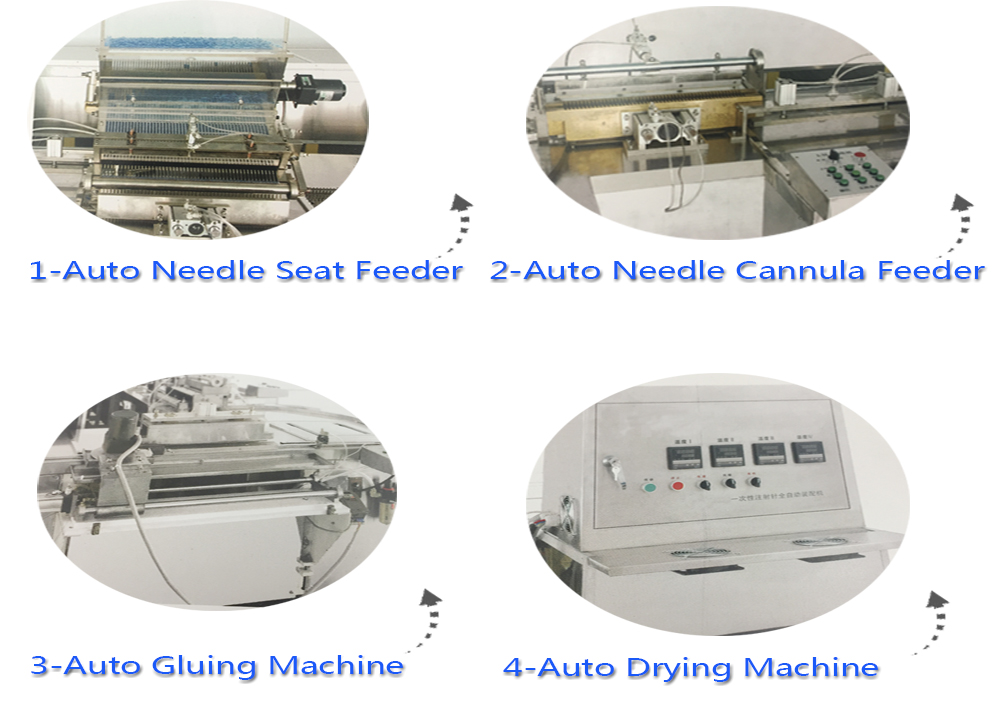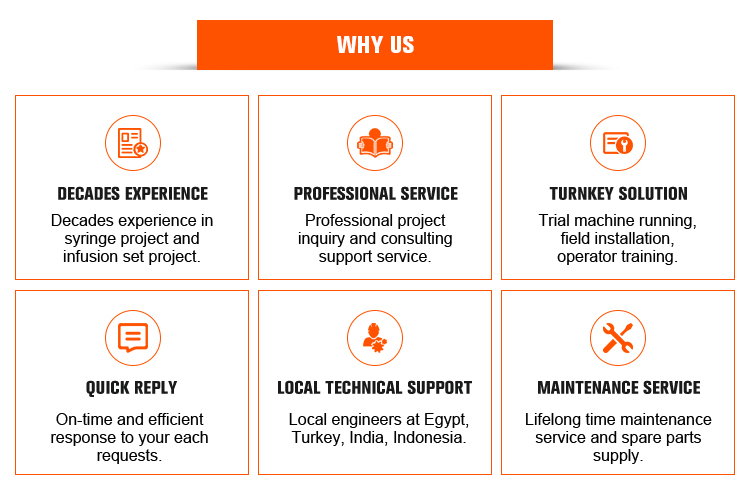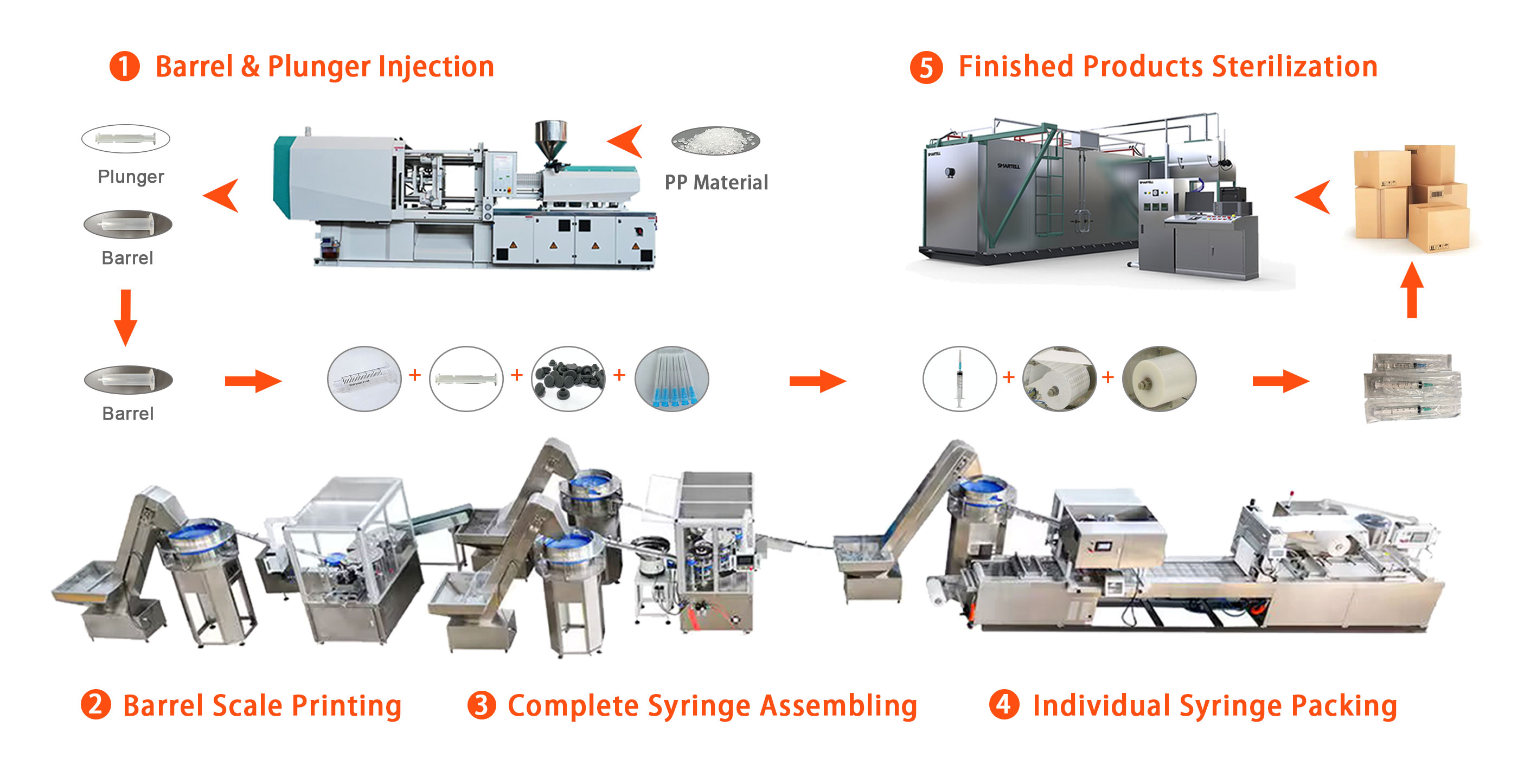| Availability: | |
|---|---|
| Quantity: | |
SMT-3104
Smartell








Basic Parameter
Capacity | 60,000pcs per hour (for master) |
Operation of worker | 1 inspector |
Extra air pressure | ≥0.60Mpa |
Extra airflow | ≥300ml/min |
Power supply | 380V * 50Hz*15Kw*3P+N+PE |
8Kw for Normal working time | |
14Kw for working after half an hour | |
Dimension | 7m(L)*3.4m(W)*1.6m(H) |
Weight | 3ton |
All parameters and dimensions are subject to change without prior notice.








Basic Parameter
Capacity | 60,000pcs per hour (for master) |
Operation of worker | 1 inspector |
Extra air pressure | ≥0.60Mpa |
Extra airflow | ≥300ml/min |
Power supply | 380V * 50Hz*15Kw*3P+N+PE |
8Kw for Normal working time | |
14Kw for working after half an hour | |
Dimension | 7m(L)*3.4m(W)*1.6m(H) |
Weight | 3ton |
All parameters and dimensions are subject to change without prior notice.
Full-automatic hypodermic needle assembly machines represent the most advanced technology in needle production. These machines are fully automated, meaning they require minimal human intervention from start to finish. They are designed to handle complex and precise tasks, including feeding, gluing, drying, testing, and final assembly, all in one continuous process.
All-in-One Operation: The machine handles every step of the needle production process, including the assembly of the needle hub, needle tube, cap, and the application of adhesives.
Multi-Size Compatibility: Modern full-automatic systems are often capable of assembling various sizes of hypodermic needles (e.g., 16G to 27G) on the same machine, providing flexibility in manufacturing.
Advanced Sensors and Control Systems: These machines feature sensors that monitor each step of the process, checking for alignment, glue application, and even testing for potential defects such as blockages or defects in the needle tube.
Advantages:
Fully automated, reducing labor costs and human error
High throughput and efficiency
Versatility in handling different needle sizes
Enhanced consistency and precision in needle quality
Disadvantages:
High initial investment and operating costs
Maintenance can be complex due to the machine's sophisticated components
Requires skilled technicians to operate and maintain

Full-automatic hypodermic needle assembly machines represent the most advanced technology in needle production. These machines are fully automated, meaning they require minimal human intervention from start to finish. They are designed to handle complex and precise tasks, including feeding, gluing, drying, testing, and final assembly, all in one continuous process.
All-in-One Operation: The machine handles every step of the needle production process, including the assembly of the needle hub, needle tube, cap, and the application of adhesives.
Multi-Size Compatibility: Modern full-automatic systems are often capable of assembling various sizes of hypodermic needles (e.g., 16G to 27G) on the same machine, providing flexibility in manufacturing.
Advanced Sensors and Control Systems: These machines feature sensors that monitor each step of the process, checking for alignment, glue application, and even testing for potential defects such as blockages or defects in the needle tube.
Advantages:
Fully automated, reducing labor costs and human error
High throughput and efficiency
Versatility in handling different needle sizes
Enhanced consistency and precision in needle quality
Disadvantages:
High initial investment and operating costs
Maintenance can be complex due to the machine's sophisticated components
Requires skilled technicians to operate and maintain








